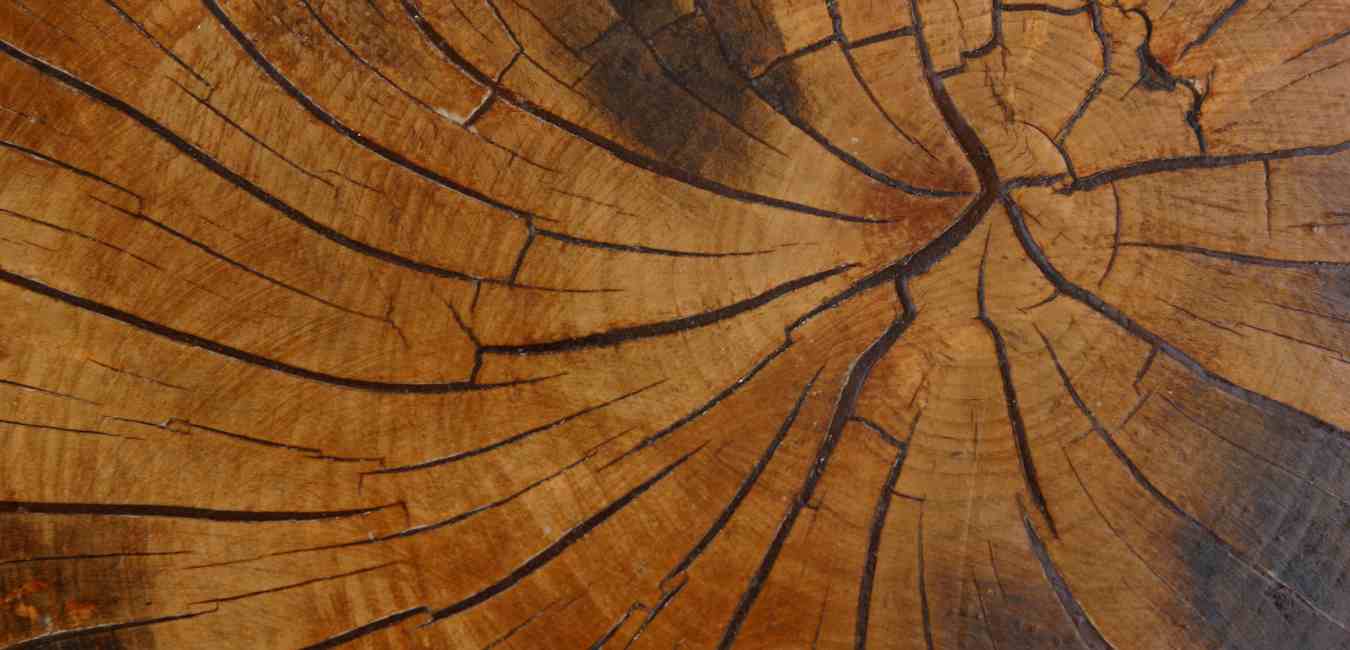
Cracks in wood? They give the wood a rugged appearance, but it is not always desirable. When customers notice cracks, it is often assumed that there is a defect in the wood.
Fortunately, cracks have no effect on the strength rating of the wood. Wood is a natural product that is constantly adapting to the environment, and cracking is part of that.
Why does cracking occur?
Cracking is caused by the drying process. As the wood dries, cracks can appear due to the increasing tension. This is mostly on the short side.
The outside of the wood dries (shrinks), while the core of the wood still contains moisture. The larger the size of the head, the more important the crack formation can be.
Cracks in wood: when does cracking most often occur?
Cracking most often occurs under the following conditions:
When customers purchase AD (air-dried) lumber and use it for interior work.
AD wood air dries, meaning it dries slowly from the outside in. The outside may appear dry while the core is still wet. If AD wood is treated on the inside, the wood dries very quickly, causing cracks to form.
It is generally accepted that wood for interior work should always be dried (KD) to a minimum of about 8-10%. If you still want to treat AD wood indoors, you must take into account the shrinkage, cracking and possibly even deformation.
During the summer months, cracking occurs faster and/or more than during other seasons. The dry and hot weather causes the wood to shrink, leading to cracking.
In wet weather (fall and winter), the wood absorbs moisture, causing the cracks to diminish or even disappear.
Can you prevent wood from cracking?
With solid lumber, it is virtually impossible to prevent cracking. By taking lumber sawn from the outside of the heart, the formation of cracks will be limited. However, the larger the head size, the more difficult it is to prevent cracking.
We have seen Douglas fir with head sizes up to and including 200x200mm, always on the outside of the heartwood. In general, Douglas has long straight trunks, which means that sawing can be done in this way.
With Oak, for example, this becomes much more difficult because it does not have long straight trunks. It then becomes very expensive. So sawing out of the heartwood is usually not done with lumber.
How can the risk of cracking be reduced?
Shrinkage (dryness) and expansion (moisture) can be limited by proper assembly and ventilation. Use the following tips:
Space between shelves
This is important for proper ventilation. For example, when installing a deck, make sure there is enough space, both between the boards and on the sides. This allows the wood to work and allows for proper ventilation. Never install boards tightly together!
Pre-drilling
By pre-drilling the wood, there is less stress on the wood during shrinkage and expansion and therefore less risk of cracking.
Stainless steel fasteners
In changing weather conditions, we always recommend using high quality screws. This gives the wood room to grow. Screws stretch under the action of the wood, but must also be able to bounce back during removal. With lower quality screws, the screw will not cooperate properly and may break.
Sealant
After cutting, we recommend treating the transverse sides with a sealant to prevent tearing as much as possible. This seals the wood and protects it from moisture.
Other solution
Finger-jointed beams. They are often constructed from dried boards that are joined (glued together) into a single beam. The boards are easy to dry and are often glued in opposite directions of growth, so that the boards work in the opposite direction from each other and thus cancel each other out. As a result, finger-jointed beams will barely crack.
Frequently asked question
How do you fix cracked wood?
How to Repair Cracked Wood [1]
1 – Insert a toothpick into the crack to hold it open.
2 – Apply wax to the area surrounding the crack to protect it from excess glue.
3 – Dribble thin CA glue into the crack.
4 – Squeeze the crack closed with finger pressure
What are the different types of cracks in wood?
Cracks are caused by changes in the external force or temperature and humidity of the wood, causing the fibers to separate from each other. Wood cracking has the following forms: crack, internal crack, end crack and wheel crack [2].
What is the difference between a crack and a fissure?
A crack is a broken piece of countertop that is most of the time, chipped, uneven, and widely separated and is usually the result of man-made stresses. On the other hand, a fissure is a part of the stone that resembles a crack, yet it is a result of natural geological formation or mineral crystallization [3]
Conclusion
In short, accept the properties of wood and see its charm. Cracks appear and disappear (for the most part). If you really don’t like the cracks, treat them and try to limit the humidity.
References
[1] https://www.rockler.com/learn/how-to-repair-cracked-wood
[2] https://www.linkedin.com/pulse/reasons-wood-cracking-solutions-lisa-lee
[3] https://www.hardrockstoneworks.com/blog/20/the-difference-between-cracks–fissures
